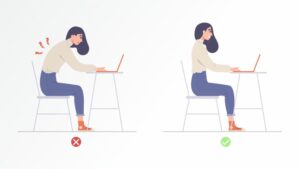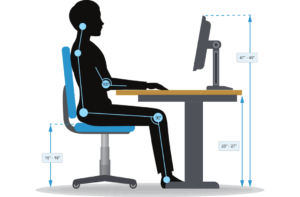Ergonomic Aspects of Improving Sleep and Rest
Sleep is essential for maintaining physical health, cognitive function, and emotional well-being. Yet, many people struggle to get enough quality sleep due to various factors such as stress, lifestyle habits, and environmental factors. Ergonomics, the science of designing environments and products to fit the people who use them, offers valuable insights into how we can optimize our sleep environment and habits to promote better sleep and rest. In this article, we’ll explore the ergonomic aspects of improving sleep and rest and discuss practical strategies for creating a sleep-friendly environment.
1. Ergonomic Bedding and Mattresses

One of the most crucial aspects of improving sleep and rest is investing in ergonomic bedding and mattresses. A mattress that is too soft or too firm can cause discomfort and contribute to poor sleep quality. Ergonomically designed mattresses provide optimal support and alignment for the spine, relieving pressure points and promoting relaxation.
Memory foam mattresses, for example, contour to the shape of the body, distributing weight evenly and reducing pressure on sensitive areas such as the hips and shoulders. Adjustable beds allow users to customize their sleeping position to their individual preferences, providing support where it’s needed most.
Similarly, ergonomic pillows play a crucial role in supporting the head and neck in a neutral position, reducing strain and tension in the muscles. Pillows with adjustable loft and firmness allow users to find the perfect balance of support and comfort for their sleep style and preferences.
2. Temperature and Humidity Control
Another important ergonomic aspect of improving sleep and rest is controlling the temperature and humidity of the sleep environment. Both temperature and humidity can have a significant impact on sleep quality, with extremes in either direction leading to discomfort and disruptions in sleep.
Ergonomically designed bedding and sleepwear made from breathable, moisture-wicking materials help regulate body temperature and keep users cool and dry throughout the night. Additionally, using a fan or air purifier can help circulate air and maintain optimal airflow in the bedroom, promoting a comfortable sleeping environment.
3. Noise Reduction and Soundproofing
Noise pollution can be a significant disruptor of sleep, particularly in urban environments or areas with high levels of ambient noise. Ergonomic solutions for reducing noise and soundproofing the bedroom can help create a quiet and peaceful sleep environment conducive to restful sleep.
Ergonomically designed earplugs or noise-canceling headphones can help block out unwanted noise and create a more tranquil sleeping environment. Additionally, soundproofing measures such as double-glazed windows, heavy curtains, and acoustic panels can help reduce external noise and create a quieter, more relaxing space for sleep.
4. Lighting and Sleep Hygiene
Lighting plays a crucial role in regulating the body’s natural sleep-wake cycle, known as the circadian rhythm. Ergonomic lighting solutions can help promote better sleep hygiene by optimizing the bedroom environment for restful sleep.
Dimming lights and using warm, amber-colored bulbs in the evening can signal to the body that it’s time to wind down and prepare for sleep. Conversely, exposure to bright, blue-rich light from electronic devices such as smartphones and tablets can disrupt the production of melatonin, a hormone that regulates sleep, making it harder to fall asleep and stay asleep.
Ergonomic solutions such as blue light filters or night mode settings on electronic devices can help mitigate the negative effects of artificial light on sleep quality. Additionally, using blackout curtains or eye masks can help block out unwanted light and create a dark, sleep-inducing environment.
5. Sleep Position and Posture

Finally, ergonomic considerations extend to sleep position and posture, which can have a significant impact on sleep quality and spinal health. While individual sleep preferences vary, certain sleep positions, such as sleeping on the back or side, are generally considered more ergonomic than others.
For example, sleeping on the back with a supportive pillow under the knees helps maintain the natural curvature of the spine and reduces pressure on the lower back. Side sleeping with a pillow between the knees can help align the spine and alleviate hip and lower back pain.
Ergonomic mattresses and pillows that provide proper support and alignment for the spine can help promote healthier sleep positions and reduce the risk of musculoskeletal discomfort and pain. Additionally, ergonomic sleep accessories such as body pillows or wedge pillows can help users find a comfortable and supportive sleep position that works for them.
In conclusion, ergonomics plays a crucial role in improving sleep and rest by optimizing the sleep environment, bedding, lighting, and sleep habits. By implementing ergonomic solutions such as ergonomic mattresses, pillows, temperature control, noise reduction, and sleep hygiene practices, individuals can create a sleep-friendly environment that promotes better sleep quality and overall well-being. Investing in ergonomic sleep solutions not only enhances physical comfort and relaxation but also contributes to better mental health, cognitive function, and daytime performance. As our understanding of ergonomics continues to evolve, so too will our ability to create environments and products that support healthy sleep and rest for people of all ages and lifestyles.


